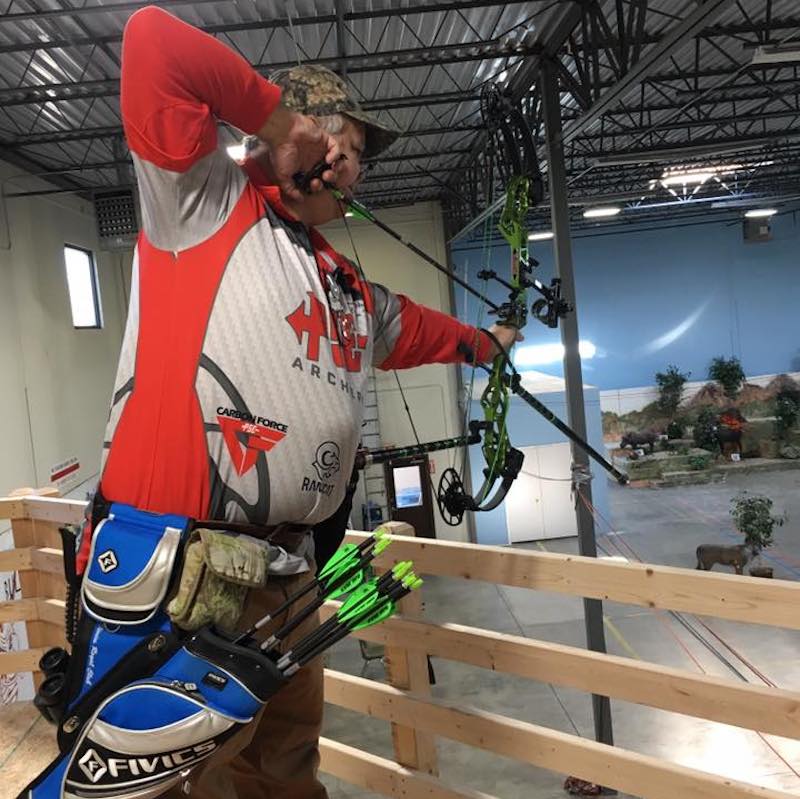Fine-Tune Your Aim: The Science Behind Compound Bow Stabilizers
Wiki Article
Maximizing Your Archery Efficiency With the Right Substance Bow Stabilizer: a Thorough Review
One crucial yet often-overlooked part in improving precision is the compound bow stabilizer. By recognizing the nuances of selecting and maximizing a compound bow stabilizer, archers can adjust their equipment to raise their capturing experience to brand-new levels of effectiveness and control.Importance of Bow Stabilizers in Archery

Additionally, bow stabilizers assist in stabilizing the weight distribution of the bow, which can enhance the archer's security while shooting and aiming. By adding weight to the front of the bow, stabilizers can decrease the quantity of torque experienced upon release, leading to a smoother and more regulated shot - compound bow stabilizer. This weight circulation also assists in holding the bow consistent for a longer duration, permitting the archer to intend much more properly
Types of Substance Bow Stabilizers
When considering the various types of compound bow stabilizers available, it is essential to recognize their distinctive functions and functions to determine the most ideal choice for optimizing archery performance. The most common kinds of compound bow stabilizers consist of sidebar stabilizers, front stabilizers, and back stabilizers. Back stabilizers, likewise called rear stabilizers, are placed to the back of the bow and help in counterbalancing the weight of various other accessories, resulting in boosted stability and steady intending.Elements to Consider When Selecting
In evaluating substance bow stabilizers, understanding the unique features and functions of each kind is essential for making an educated decision on the most ideal option to improve archery efficiency. When choosing a stabilizer, one need to consider the weight of the stabilizer itself. While a much heavier stabilizer can give more stability by lowering the bow's movement, it may likewise create fatigue during lengthy shooting sessions. Equilibrium is another vital variable to ponder. The stabilizer's length and style dramatically impact the bow's balance, influencing the shooter's ability to hold consistent purpose. Additionally, the material of the stabilizer can influence its efficiency. Carbon fiber stabilizers are light-weight and soak up resonances well, enhancing accuracy. Additionally, the number and adjustability of dampeners on the stabilizer can adjust its efficiency by lowering noise and shock upon release. By carefully examining these aspects, archers can pick a substance bow stabilizer that aligns with their shooting style and maximizes their overall efficiency on the archery array.
Installment and Modification Tips
For optimal performance and accuracy in archery, grasping the setup and adjustment of your bow stabilizer is crucial. Appropriate installment begins with affixing the stabilizer to the bow's riser, ensuring it is strongly secured.When changing the stabilizer, begin with little step-by-step changes rather than radical adjustments. This enables you to assess the effect of each alteration accurately. Take notice of just how the bow reacts to modifications in stabilizer setups and make adjustments pop over here appropriately. Bear in mind that the goal is to find a configuration that decreases hand torque, decreases resonance, and boosts precision. Consistently check the stabilizer's tightness and general problem to helpful hints guarantee it remains to function efficiently. By grasping the installment and change procedure, you can maximize your archery performance and elevate your shooting experience.
Upkeep and Treatment Standards

It is also important to save your bow with the stabilizer in a safe and secure place when not in usage. Complying with these upkeep and care standards will help you obtain the most out of your bow stabilizer and boost your general archery efficiency.
Final Thought
In final thought, choosing the ideal compound bow stabilizer is crucial for taking full advantage of archery performance. Understanding the relevance, types, elements to think about, installation and change ideas, in addition to upkeep and care standards can considerably impact one's accuracy and uniformity in capturing. By selecting a stabilizer that suits private demands and choices, archers can boost their general efficiency and attain better outcomes on the range or in competition.Bow stabilizers play an important duty in improving an archer's precision and uniformity by reducing resonances and supporting the bow during the release of an arrow - compound bow stabilizer.Additionally, bow stabilizers assist in stabilizing the weight distribution of the bow, which can enhance the archer's security while firing and intending. The most typical types of substance bow stabilizers consist of sidebar stabilizers, front stabilizers, and back stabilizers. Back stabilizers, also called back stabilizers, are installed to the back of the bow and help in counterbalancing the weight of various other devices, resulting in improved stability and stable aiming. When selecting a stabilizer, one have to take into consideration the weight of the stabilizer itself
Report this wiki page